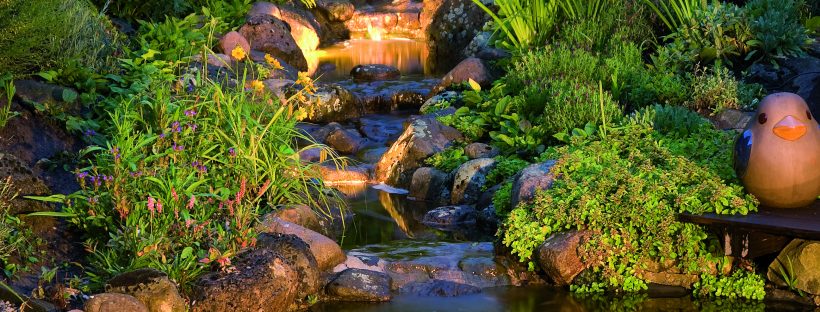It’s almost February, the ground’s frozen and my sons are too smart to work outside with me, so it’s the perfect time to plan next year’s project. The three most important attributes of the perfect garden pond often get overlooked in the rush to dig, so I thought it might make sense to talk about them now, when all we can do here is talk anyway.

So, the waterfall is usually the first thing folks think about, followed by the pond size and the fish they want to showcase, but what I try to plan for first are crystal clear water, minimal maintenance and low operating cost. These are the less glamorous, more practical attributes of the perfect pond. Without them the charm and beauty of the water garden soon fade.
Water clarity is the most important of the three, because poor water quality is the first thing anyone notices and a constant source of aggravation. The best way to guarantee perfect clarity is to install adequate filtration, but I’m a belt-and-suspenders man – I like to minimize maintenance and safeguard against eventual overcrowding as well.
The two most common philosophies of pond filtration adopt different approaches. The skimmer+biofilter model removes floating debris before it sinks, but relies on cleanouts to remove heavier accumulated solids that don’t float, like fish wastes. The other school of thought targets fish wastes, with a pump on the bottom designed to capture those wastes and send them to more efficient mechanical filters, but leaves need to be netted out. Combining the two methods removes more wastes and gives better results than either alone can provide. The skimmer houses the waterfall pump and traps leaves, the biofilter removes large debris and starts the stream and falls, a smaller high efficiency pump designed to capture wastes sits in the bottom and pushes wastes to a partially buried pressure filter that’s easy to backwash.
Maintenance is actually lower with the combined systems, because each has half as much work to do, so the biofilter and pressure filter can be cleaned half as often, and major pump-down cleanouts are eliminated altogether.
Aha! I hear you say. But what about those two pumps! What happened to lowering operating costs? Well, pump operating costs actually drop if the waterfall pump only runs when you’re there to enjoy it. For example, let’s say we have a 4,000 gallon pond, 15’x20’, three feet deep at the low spot, but with 18” deep shelves all the way around, a 10 foot long stream and two falls about 4’ tall total. I’d spec a TT5000 pump in a PS4600 skimmer pushing 4000gph up to a BF2600 to start the stream, and an AquaMax Eco Classic feeding a FiltoClear 8000 to polish the water. I’d set up a timer for the waterfall to run 12 hours at 310 watts plus 150 for the other pump, which I’d run 24/7. That works out to less wattage than the one larger pump alone! (12×310 + 24×150<24×310) And, having two pumps means I never have to worry about one failing, there’s a built-in reserve.
Now that the tough stuff is designed, I can start to think about the waterfall….
About the Author:

DEMI FORTUNA
Demi has been in water garden construction since 1986. As Atlantic’s Director of Product Information, if he’s not building water features, he’s writing or talking about them. If you have a design or construction question, he’s the one to ask.


